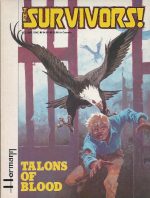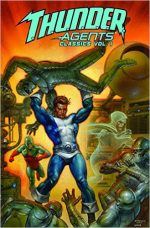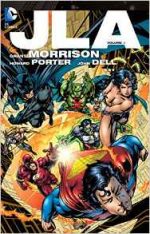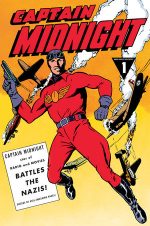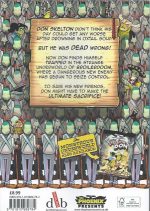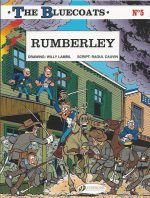The comic has been with us a long time now and debate still continues about where, when and exactly what constitutes the first of these artefacts to truly earn the title. There’s a lot less debate about the Children’s Annual: a particularly British institution and one that continues – albeit in a severely limited manner – to this day.
It’s a rare and tragic individual who never received a colourful card-covered compendium on Christmas morning; full of stories and comic-strips and usually featuring the seasonal antics of their favourite characters, whether from comics such as Beano, The Dandy, Lion, Eagle and their ilk, or TV, film or radio franchises/personalities such as Dr Who, Star Wars, Thunderbirds, Radio Fun or Arthur Askey. There were even sports and hobby annuals and beautifully illustrated commemorative editions of the fact and general knowledge comics such as Look and Learn, and special events such as the always glorious Rupert Bear or Giles Annuals.
Here then is a brief celebration of the kinds of genre celebrations which delighted kids and their parents…
Bimbo Book 1981

By many and various (DC Thomson & Co, Ltd)
ISBN: 0-85116-190-1
Once upon a time – and for the longest time imaginable – comics were denigrated as a creative and narrative ghetto cherished only by children and simpletons. For decades the producers, creators and lovers of the medium struggled to change that perception and – gradually – acceptance came.
These days most folk accept that word and pictures in sequential union can make statements and tell truths as valid, challenging and life-changing as any other full-blown art-form.
Sadly, along the way the commercial underpinnings of the industry fell away and they won’t be coming back…
Where once there were a host of successful, self-propagating comics scrupulously generating tales and delights intended to entertain, inform and educate through periodical publications such specific demographics as Toddler/Nursery, Young and Older Juvenile, General, Boys and Girls, nowadays Britain, America and most of Europe can only afford to maintain a few paltry out-industry, licensed tie-ins and spin-offs for younger readers.
The greater proportion of strip magazines are necessarily manufactured for a highly specific – and dwindling – niche market, whilst the genres that fed and nurtured comics are more effectively and expansively disseminated via TV, movies and digital/games media.
Thankfully old-fashioned book publishers and the graphic novel industry have a different business model and far more sensible long-term goals, so the lack has been increasingly countered and the challenge to train and bring youngsters into the medium taken up outside the mainstream – and dying – periodical markets.
I’ve banged on for years about the industry’s foolish rejection of the beginner-reading markets, but what most publishers have been collectively offering young/early consumers – and their parents (excepting, most notably the magnificent efforts of David Fickling Books and their wonderful comic The Phoenix, or Art Spiegelman and Françoise Mouly’s Toon Books imprint) – has seldom jibed with what those incredibly selective consumers are interested in or need.
Rant over…
Bimbo was a high production value weekly title intended for nursery age and pre-school children first released by DC Thomson in 1961. The name came from its lead character, an adventurous lad originally drawn by Bob Dewar, whilst the rest of the comic featured numerous strips, stories games and puzzles. Bimbo ran until 1972, with Annuals continuing well into the 1980s.
The comic was especially noteworthy because it wisely adapted stars from its older range magazines to appear in simpler tales suitable to a younger audience.
Amongst the migrants thus gainfully employed were Dudley D. Watkins’ Tom Thumb from The Beano, Patsy the Panda from girl’s weekly Twinkle and Bill Ritchie’s mischievous scamp Baby Crockett from Beezer.
This particular inspirational and entertaining tome hit the shelve in 1980 and adults would have read to their younglings an enchanting procession of beautifully illustrated, full-colour strips, puzzles and stories that challenged little minds but didn’t confuse them with such modern contrivances as word balloons or sound effects. Bimbo was strictly old-school and only offered prose or the traditional text-block-&-cartoon panel comics.
The wonderment begins with an expansive double page spread frontispiece with a battalion of mice attacking a giant cheese – a conceit concluded at the end of the book where readers could see the incredible sculpture the rowdy rodents made while consuming their beloved fave-food – after which a cunning rebus welcomes the audience with ‘A Letter From Bimbo’…
The first block-&-text strip depicts ‘A Merry Mouse Christmas’ as little Lily pilfers snacks from the human’s indoor tree to create a feast for her many brothers and sisters after which ‘Wiggles’ the Worm goes looking for a less earthy home whilst tiger cub ‘Brave Little Bertie’ breaks down barriers of prejudice by inviting the fearsome crocodile Snapper to the animals’ picnic in a delightful prose story with superb illustrations by a cruelly anonymous artist.
As the strips resume, the farm animals unite to find a new wallow for ‘Roly-Poly Percy’ after his pig pen dries up whilst bold pigeon ‘Puffy’ and his pal Seagull Sam go sightseeing in London and an unseen artist demonstrates the joys of ‘Dotty Doodles’ with Robby Rabbit…
‘Pantomime Puzzles’ then offer a variety of paper-based games and age-appropriate brain-teasers and ‘Patsy Panda’ finds an equitable solution to a farmer’s woes after hungry rabbits start consuming his carrot crop…
Illustrated poem ‘The Christmas Robin’ segues into a mesmerising prose fantasy as little Joanna discovers a magical train still stops at the shut-down rail station near her house. Her eye-opening excursion on the ‘The Bumble-Bee Line’ then leads to strip ‘A Holiday trip for Terry’ as a plodding tortoise gives his invertebrate pals a ride and discovers activities that don’t demand rush or hustle…
‘The Funumbers – the Fun Folk who live in Numberland’ combines comic fun with counting skills after which cover-star ‘Pip Penguin’ (by Bill Ritchie?) turns his new fancy dress costume into a useful new career whilst ‘Twirlies’ share the secret of how to make a transformation game out of old scraps and crayons…
Toy bear ‘Jimpy’ gets up to comic strip hijinks with a bunch of elves whilst a kind-hearted bird helps a wounded fairy and is rewarded with ‘Bobbie’s picnic party’.
Prose parable ‘Lenny’s Long Walk’ teaches a wilful puppy the wisdom of not wandering off and a snowbound mallard experiences ‘Ducky’s lucky day’ after getting warm new attire before wits are exercised with a ‘Zoo puzzle-time’…
Young Squirrel-Tail makes himself unexpectedly useful in a ‘Riverbank rescue’, after which strip fun resumes as hedgehog ‘Wandering Willie’ undertakes his evening perambulations in a poetic manner whilst ‘Models-to-make’ imparts D-I-Y details on constructing lions, camels, turtles, porcupines, hippos, elephants and snakes with household odds and ends.
Wrapping up the story time is a worrisome tale of a lost pet who finally resurfaces in ‘Pussycat-kitten gets a name’ and a last lovely strip as a little girl finds her station in life as the Keeper of ‘The Royal Robins’…
Superbly entertaining and magnificently crafted, this is a children’s tome certain to inculcate a lifetime love affair with comics.
© DC Thomson & Co., Ltd 1980.
Roy of the Rovers Annual 1995

By many and various (Fleetway)
ISBN: 85037-615-7
Roy of the Rovers started his dazzling career on the front cover of the first Tiger; a new weekly anthology comic published by Amalgamated Press (later IPC and/or Fleetway Publications) which launched on September 11th 1954.
The “Sport and Adventure Picture Story Weekly†was a cannily crafted companion to Lion, AP’s successful response to Hulton Press’ mighty Eagle (home of Dan Dare). From the kick-off Tiger concentrated heavily on sports stars and themes, with issue #1 also featuring The Speedster from Bleakmoor, Mascot of Bad Luck and Tales of Whitestoke School amongst others.
In later years racing driver Skid Solo and wrestler Johnny Cougar joined more traditional, earthy strips such as Billy’s Boots, Nipper, Hotshot Hamish and Martin’s Marvellous Mini, but for most of its 1,555-issue Tiger was simply the comic with Roy of the Rovers. Such was his cachet that he starred in 37 of his own Christmas Annuals between 1958 and 2000.
Roy Race was created by Frank S. Pepper (who used the pseudonym Stewart Colwyn) and drawn by Joe Colquhoun (who inherited it when he took over scripting the feature). The scripting eventually devolved to Tiger’s Editor Derek Birnage (credited to “Bobby Charlton†for a couple of years), with additional tales from Scott Goodall and Tom Tully.
In 1975 Roy became player-manager and the following year graduated to his own weekly comic, just in time for the 1976-77 season, premiering on September 25th and running for 855 issues (ending March 20th 1993).
Roy started as a humble apprentice at mighty Melchester Rovers, and gradually rose to captain the first team. After many years of winning all the glories the beautiful game offered, he settled down to live the dream: wife, kids, wealth, comfort and sporting triumph every Saturday…
The end-of-year Annuals began in 1957 (Roy of the Rovers Football Annual 1958): sturdy hardbacks blending sporting stories and strips with games, quizzes and short fact features. The tradition lasted until 2000, although as the years passed and photography became cheaper to incorporate, the fiction began to lose out to photo features and pin-ups…
This glittering tome comes from 1984 when the comic was regularly selling half a million copies a week. The stories were always much more than simply “He shoots! He’s scored!!!†formulaic episodes: they’re closer to the sports-based TV dramas of later decades like Dream Team (litigiously so, in some cases…).
This particular touchline tome begins with photo-spread ‘Watch Out for Wark!’ featuring a winning moment for Ipswich and Scotland midfielder John Wark, before ‘Roy of the Rovers’ (by Tully or Barrie Tomlinson & David Sque?) sees the player-manager employ horse doctoring methods to get Melchester Rovers match-fit…
A selection of ‘Super Colour Photos’ of players you probably won’t remember leads to a reconditioned reprint in black-&-white as ‘Mike’s Mini Men’ details how a boy expert in tabletop football (definitely not Subbuteo!â„¢) adopts his strategic skills to the real thing after joining the school soccer squad.
Dotted with star pin-ups throughout, the book then offers a photo-feature on reader Malcolm Dickenson who won the Mattel Electrolympics tournament in ‘Champion!’ and ‘Famous Football Funnies!’ from cartoonist Nigel Edwards before ‘Yesteryear’ offers picture-strip histories of Celtic and Manchester United in dazzling red, black & white duo-colour.
Then centre-back Johnny Dexter renews his comedic battle of wills with Danefield United manager Viktor Boskovic in ‘The Hard Man’ (Tomlinson & Doug Maxted) before more men in short shorts are photographically celebrated in ‘Internationals on Parade’.
‘Tommy’s Troubles’ (Fred Baker & Ramiro Bujeiro?) found a footy-mad lad trying to run his own team whilst attending a rugby-only school and outwitting his bullying classmates and – after more ‘Famous Football Funnies!’ from Peter Williams – details in monochrome photo-reportage ‘Saturday at Spurs’…
There are loads ‘More Colour Photos’ of soccer stars in action before extended epic ‘Mike’s Mini Men’ concludes and ‘Go For Goal!’ tests sporting knowledge before the two-colour entertainment resumes with manager Dan Wayne and his groundsman Joe Croke continuing their struggles to keep minor league minnows ‘Durrells Palace’ afloat…
Gag veteran Clew provides more ‘Famous Football Funnies!’ before ‘Running For Roy’ photo-focuses on the weekly comic’s editorial team as they competed in the St. Albans mini-marathon, after which ‘Roy’s Talk-In’ reviews recent real-world seasons and – following more footy photos – details the newsworthy events in the comic with clip essay ‘Roy Hits the Headlines!’
‘Mighty Mouse’ (Baker & Julio Schiaffino) then delivers in crisp black-&-white another unlikely exploit of short, fat and myopic medical student Kevin Mouse whose uncanny ball skills and physical speed and dexterity won him a place on the team at beleaguered First Division Tottenford Rovers before proceedings are brought to full time with a closing photo-spread of ‘Norman the Conqueror’ (Norman Whiteside) in a moment of international glory…
Old football comics are never going to be the toast of the medium’s Critical Glitterati, but these were astonishingly popular strips in their day, and produced for maximum entertainment value by highly skilled professionals. They still have the power to enthral and captivate far beyond the limits of nostalgia and fashion – even when they were steadily losing ground to pin-ups and photo opportunities. If your footy-mad youngster isn’t reading enough, this might be best tactic to catch him – or her – totally offside…
© IPC Magazines Ltd., 1984.
Girls’ Crystal Annual 1974
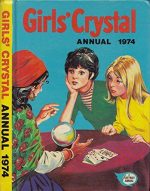
By Many and various (Fleetway)
ASIN: B004HL75TC
Like most of my comics contemporaries I harbour a secret shame. Growing up, I was well aware of the weeklies produced for girls but would never admit to reading them. My loss: I now know that they were packed with some great strips by astounding artists, many of them personal favourites when they were drawing stalwart soldiers, marauding monsters and sinister aliens.
Moreover, whenever I pass a mirror I’m well aware that me and my mates could have benefited from some make-up tips and fashion advice in our formative years…
Seriously though, It’s a bit ungracious – but quite typical – to lump in a token Girls Comic Annual in my Genre section as the quality and quantity of the output for young females was staggering, but it’s an area where my meagre knowledge of British-originated material and creators is practically non-existent, even if my late-found admiration is totally genuine.
I actually think. in terms of quality and respect for the readership’s intelligence, experience and development girl’s periodicals were far more in tune with the sensibilities of the target audience. They read pretty good today too…
The vast range of titles from numerous publishers all had Christmas Annuals and I’ve picked one at random: Girl’s Crystal Annual 1974, a time just before changing tastes slowly transformed the distaff side of the industry from story-based content into photo-packed, fashion and pop trend-led miniature life-style brochures like Cosmopolitan.
The comic had a spectacular pedigree. The Crystal launched on October 28th 1935 before renaming itself Girl’s Crystal nine weeks later. It was another story-paper success for Harmsworth’s Amalgamated Press but retooled as a comic with some prose material with the March 21st 1953 edition. It merged with School Friend in May 1963. As was often the case the brand continued through the Annuals however, running from 1939 (that would be Girl’s Crystal Annual 1940) to 1975 (a 1976 cover-date). I suspect parents and relatives were attracted at Gift-Giving Time to a familiar name from their own childhoods…
Like all such Annuals, this one features a mix of text stories, features, pin-ups, puzzles and comic strips – both new and cunningly recycled reprints – and opens with a duo-hued thriller as little Joanna Jones and her pals stumble across a baffling yet affable boffin whose newly discovered dinosaur becomes ‘The Burglar Catcher’.
The riotous strip is rendered by a tantalisingly familiar Spanish or South American artist and is followed by a cartoon-embellished, light-hearted exposé of ‘Superstitions’ and ‘The Mobile Music Makers’; a prose yarn of young entrepreneurs setting up a travelling discotheque…
Cartoon Fox and Chicken strip ‘Pete and Pecker’ segues into a splendid monochrome reprint yarn as resized and recycled adventure serial ‘Casey of the Crazy K’ (as seen in Schoolgirl Picture Library) kicks of a monochrome section.
The premise was simple but intriguing: British teen Casey Kildare inherits a ranch in Arizona and becomes embroiled in all manner of cowboy shenanigans when she goes west…
Brain-bending follows with ‘It’s Puzzling!’ and dazzling glamour when ‘Diamonds are a Girl’s Best Friend’ reveals the history and lore of the gem trade before text thriller ‘All in a Day’s Work’ sees a young ballet student uncover smugglers at work inside her touring troupe.
A modern day Scrooge is socialised after enduring ‘A Carol for Christmas’ (strip art by Ortiz perhaps?) when some subsequent meddling by Anne and her school friends evoke the traditional change of heart. Another perplexing ‘Teaser Time’ leads to a prose panic as a Jean and Julia have a supernatural close shave in ‘The Pine Wood’…
That shifts us quite sensibly into an examination of ‘Curious Curses’ before more classic comedy-adventure ensues with ‘Aunt Jemima on the Warpath’: another resized repeat from story digest June and School Friend Picture Library #376.
Here a remarkably adept lady detective in the classic mould of Margaret Rutherford gives her niece Mandy and chums Sue, John and Steve on-the-job training in catching crooks…
At a suitably tense moment the saga pauses to examine quaint ‘Festivals and Customs’ before moving prose poser – illustrated by the wonderful Brian Lewis – ‘Ferdy Comes Home’ details the heroic acts of an extremely challenging canine…
‘Sally: Dancer in Disguise’ (which looks like Arthur Ferrier art to me) sees a world-famous ballerina seek solitude by changing her looks, only to become entangled in a deadly conspiracy, which after a doggy ‘Pin-up’ leads to another lengthy text tale as Miranda helps out at her brother’s hotel and encounters blackmail, scandal and other forms of skulduggery in ‘Never a Quiet Moment!’…
Strip ‘The Lady of the Manor’ sees orphan Mary McMay bamboozled into a bizarre bequest tangle after complete – and completely obnoxious – stranger Sylvia McMonk invites her to view a Scottish castle which is apparently their shared inheritance, before ‘Patsy’s Country Walk’ reveals hidden secrets of nature.
Demonstrating all her junior Modesty Blaise aplomb, globe-trotting action-ace Miss Adventure tackles a particularly nasty missing-persons case in ‘Jacey Takes Command’ after which ‘Never a Quiet Moment!’ concludes and ‘With Nature’s Help Look Beautiful’ reveals astounding historical secrets of the cosmetician’s art.
‘Janet’s Day of Dreams’ depicts the idly feverish ruminations of a star-struck girl stuck in bed with measles, whilst herb lore is explored in ‘Mary, Mary, Quite Contrary’ and ‘Aunt Jemima on the Warpath’ explosively wraps up.
‘The Mystery of Artist Island’ then details in terse text the tale of art student Vicky Danvers who exposes a forgery ring on her holidays.
Upholding a cherished stereotype, equestrian strip ‘No Horse for Heather!’ reveals how an impoverished girl trounces posh snobs in the show ring and wins her own steed, whilst ‘The Girl Who Conquered Fear!’ details the astounding feats of a missionary’s daughter before returning duo-colour signifies the imminent end of our travels.
Gag page ‘Time for a Laugh’ is followed by a fact feature on ‘Wise Old Owls’, ‘It’s Puzzling!: Answers’ and the animal antics of a wild girl in ‘Janie’s Jungle Jinks’ before one last strip reveals how a palace skivvy rises to an elevated status thanks to the interventions of ‘The Cat and the King’.
Far more wide-ranging and certainly inexpressibly well written and illustrated; this a magnificent example of comics at their most enticing. It’s well past time that there was a concerted effort to get this stuff back into print…
© IPC Magazines Ltd. 1973.
